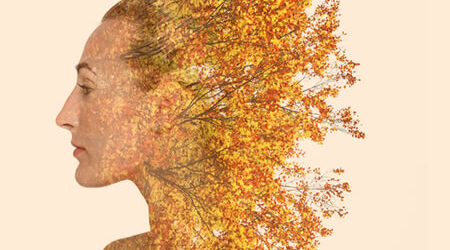Forms of Herbal Remedies
Last Updated on December 18, 2017 by Abigail Adams
Infusions
Infusions are a simple way of extracting the active principles of herbs through the action of hot water. The preparation of infusions is similar to way we prepare tea. This method is used to extract the volatile components of the dried or green aerial parts of herbs and plants like flowers and leaves. Infusions may use single herbs or a blend and are drunk hot or cold. Certainly this is the most common and cheap method of extracting the medicinal compounds of herbs.
Decoctions
Roots, barks and fruits being thicker and less permeable than the aerial parts of medicinal plants, do not liberate their active principles by simple infusion. It is necessary to simmer these parts in boiling water in order to extract their medicinal constituents. The material should be cut or broken into small pieces. In order to avoid loosing volatile constituents, use a lid over the simmering pan. After cooling down and separating the solid from the liquid, decoctions can be taken hot or cold.
Tinctures
Most of the volatile components of medicinal plants and herbs are soluble in alcohol. By immersing dried or fresh parts of plants in alcohol, the active principles are easily extracted at concentrations that exceed those that can be achieved by infusion or decoction. Highly concentrate solutions that will last for one to two years are a convenient way to store and use medicinal plants constituents. Ideally tinctures should be made using pure ethyl alcohol distilled from cereals. However, since this product is not available to the public, good Vodka with 45-35% alcohol can be used. The extraction is fairly quick. A 50% mixture of herbs and alcohol kept in a tightly closed jar will held a tincture ready for use at the prescribed dosage. Never use methyl alcohol, methylated spirits, isopropyl alcohol or any other kind of unknown spirit to make tinctures.
Syrups
With some rare exceptions, like peppermint that is a familiar flavoring agent in toot paste and chewing gum, infused or decoction herbs are not palatable, specially for children. In order to disguise their taste, infusion and decoctions can be mixed with honey or unrefined sugar from cane. These syrups combine the soothing action of these solvents to the medicinal properties of the infusions and decoctions resulting in additional benefits specially for treating cough and sore throats.
Infused Oils
Pure vegetable oils like sunflower, almond and olive oil are easily found at grocer stores. They have the property of dissolving the active, fat-soluble active principles of medicinal plants and herbs. This process is called infusion and can be carried out at room temperature or higher. Infusion is a slower process than alcohol extraction but has the advantage of resulting in an oil based solution of medicinal constituents that can easily be used to make creams and ointments. Hot infusion is recommended for the harder parts of the plants while cold infusion is more suitable for flowers and leaves.
Essential Oils
Essential oils are the volatile oily components of aromatic plants, trees and grasses. They are found in tiny glands located in the flowers (neroli), leaves (eucalyptus), roots (calamus), wood (sandal) and resins (frankincense). Essential oils are extracted by four main methods: steam distillation, expression, solvent extraction and enfleurage. In the first method the oil is extracted by the action of hot steam and then selectively condensed with water from which it is separated. In the second method the oil is extracted by pressure or centrifugation. In the third method the oil is dissolved in a volatile solvent that when evaporated leaves a heavily natural wax substance called concrete. When separated from the wax, the resulting liquid is called an absolute, the most concentrated from of aroma available. Enfleurage is a longer process involving the dissolution of the oils in animal fat and its separation using alcohol. Although essential oils main usage is in cosmetics and perfumery, many of them do have proved therapeutic properties.
Ointments
Ointments are prepared like hot infused oils, the difference being that herbs are simmered in waxes or fats containing no water. After separating the simmered herbs by squeezing and cooling, the result is a solid mixture of the wax or fat with the medicinal constituents of the plant. Petroleum jelly, soft paraffin wax and bee’s wax are some common bases used. Ointments form a oily barrier on the surface of injuries and carry the active principles to the affected area.
Creams
Creams are mixtures of oils or fats with water. Since water and oils are not miscible, it is necessary to add an emulsifying agent that avoids their separation. Creams are therefore stable emulsions of oils or fats. Medicinal properties are added to creams when they use or are made with tinctures, infusions, oil infusions, essential oils or decoctions. Creams are permeable allowing the skin to breathe and sweat. Their water content and some additional hydrophobic agent like Glycerin promotes the hydration and cooling of the skin.










Leave a Reply